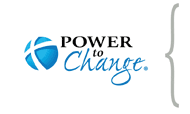 The most valuable things we offer our children cost nothing. But there are many other things we give them that cost money. The most expensive is often the opportunity for them to attend college or university. Without financial assistance, our children may have to forego post-secondary education or graduate with loads of student debts. We want to give them the gift of higher education, but can we afford it?
The most valuable things we offer our children cost nothing. But there are many other things we give them that cost money. The most expensive is often the opportunity for them to attend college or university. Without financial assistance, our children may have to forego post-secondary education or graduate with loads of student debts. We want to give them the gift of higher education, but can we afford it?
Education for children or grandchildren is an investment and, like all investments, the sooner you commit, the greater your reward. This may be difficult to grasp when you are managing mortgage payments and all the expenses of a growing family. With help from the federal government, qualified investment advice, and a little planning, education funds can be amassed over time.
RESPs
Start by opening a Registered Education Savings Plan (RESP). An RESP is a Registered Retirement Savings Plan (RRSP) for your children’s education. Contributions to the plan are invested and earnings from these investments remain free of income tax until applied to the beneficiary’s education, when they are taxed in the student’s hands. Since a student’s anticipated income is either nil or very low, the income tax is insignificant.
Unlike an RRSP, you cannot deduct RESP contributions from taxable income. The federal government, however, may increase the contributions via a Canada Education Savings Grant (CESG) and a Canada Learning Bond (CLB). (Residents of Alberta may be eligible for an Alberta Centennial Education Savings Grant.) Additionally, A CLB will provide up to $2000 over 15 years, to assist modest-income families who have children born after December 31, 2003.
Grandparents and family friends may open their own plan. You can launch an RESP for a grandchild, niece, nephew, or any child you wish to assist in obtaining a college or university education simply by naming them as the beneficiary.
RESP growth depends on your investment decisions. An RESP should be considered an investment, not a savings plan. Two elements that can maximize the growth of your RESP are an early start and professional investment advice. A $2500 contribution made annually combined with the maximum CESG contribution, will grow to a substantial amount. You may contribute a maximum of $50,000 to an RESP.
What happens if the child opts out of pursuing a post-secondary education? You have a number of options that are available:
- Wait for your child to pursue post-secondary studies at a later date
- Transfer the plan to a brother or sister who chooses to attend college or university
- Transfer the money to your RRSP (less CESG and CLB funds)
- Withdraw your contributions tax-free. Investment earnings are subject to income tax; CESG and CLB contributions must be returned to the federal government.
Getting started
Start with a SIN and a telephone call. As the beneficiary of your RESP, your child must have a Social Insurance Number (SIN). For information on obtaining a SIN application, contact your local Service Canada Centre. After your child is assigned a SIN, contact a FaithLife Financial representative to help you choose the best available RESP plan and guide you through the government’s CESG application process.
For help in getting your financial needs in balance so you can live a more generous life as God calls, contact FaithLife Financial.
Call 1-800-563-6237, or email moreinfo@faithlifefinancial.ca.
Visit our website www.faithlifefinancial.ca
FOLLOW US ON Facebook and Twitter
<http://www.facebook.com/pages/FaithLife-FInancial/149546468394399> <http://www.twitter.com/faithlifefin>














 Subscribe
Subscribe 




 Talk to a Mentor
Talk to a Mentor Need Prayer?
Need Prayer? Join Chat
Join Chat Life Lessons
Life Lessons 1-800-247-3180 | 604-514-2135
1-800-247-3180 | 604-514-2135